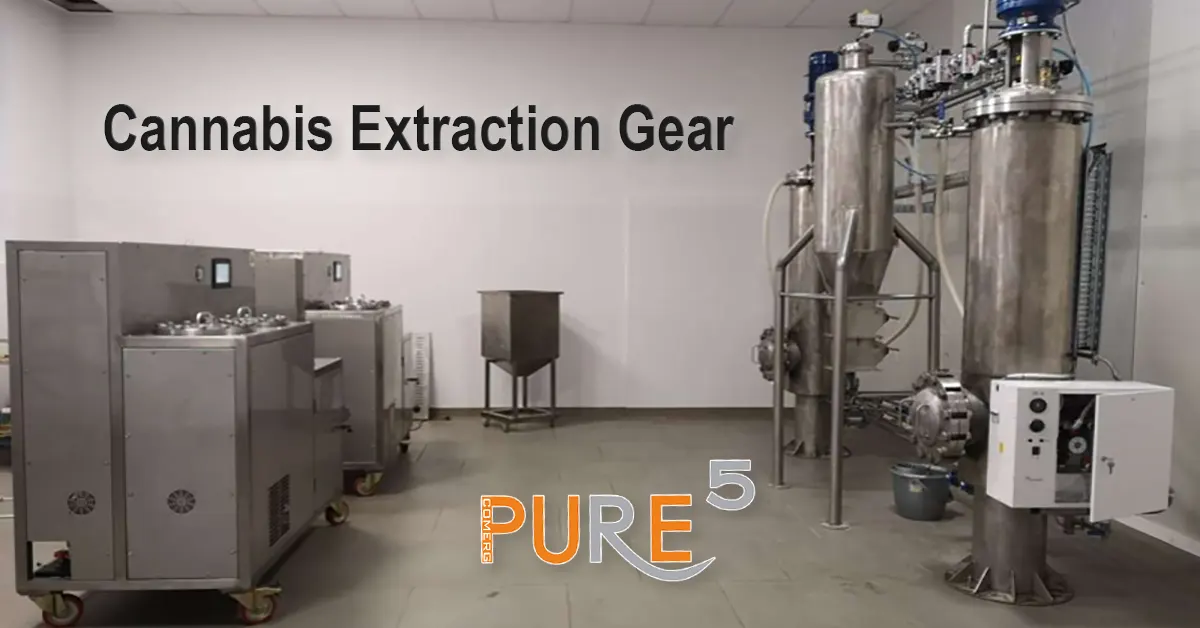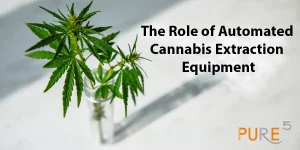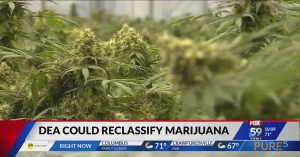Comparison (Cons & Pros)
Table of Contents
ToggleThe five primary used methods for cannabis extraction are CO2 (SFE), ethanol, hydrocarbon, iced water (bubble hash), and R134a aerosol cannabis extraction by PURE5™. The following article explains all types of machineries and post processing equipment used in each extraction process.
The five essential strategies for cannabis extraction within the industry are CO2 cannabis extraction, propane/butane hydrocarbon cannabis extraction, ethanol cannabis extraction, PURE5™ R134A aerosol extraction and bubble hash extraction. The following sections explain the types of machinery and equipment used in each extraction process.
CO2 method for cannabis extraction
CO2 extraction is also called Supercritical Fluid Extraction (SFE) with CO2, because the CO2 needs to be compressed above its super critical stage in order to become an extraction solvent. Popular manufactures are FX2 Hi-Flo, BOSS and Super C systems. They are popular within the CO2 cannabis extraction process. The cost of each of those units vary where the size affects pricing as well.
FX2 Hi-Flo Extraction Equipment

The Hi-Flo High-Performance Series has several benefits, including continued processing as a result of its high-quality engineering design and materials, straightforward operations following a centralized control center, and low maintenance costs because of CO2 recapturing and the lack of internal moving parts.
The Hi-Flo Significant Performance Series has a reduced capacity compared to other competitive products, requires a properly ventilated and controlled environment, is not ideal for small-scale operators, and has high purchase prices.
Boss CO2 Extraction Equipment
BOSS CO2 Extraction System is highly automated botanical processing machining equipment
Benefits of the system include its effectiveness without the use of “toxic solvents,” relatively minor environmental impact, low energy costs, and automated material loading.
Drawbacks: ineffective for small-scale processing, necessity for cautious CO2 storage, and operation at high pressures.
Cannabis SFE
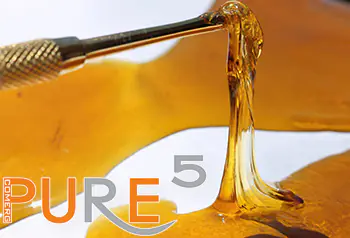
Cons: It isn’t reasonable for large-scale generation, needs robotization for stacking between runs, and, just like The Boss, requires cautious CO2 capacity due to its operation at big pressures.
Apex CO2 Extraction Equipment
The famous Apeks Supercritical CO2 Framework may be a preparing framework planned for mechanical use.
Benefits include its integrated CO2 storage tank, full automation, and efficiency for large-scale processing activities.
The equipment’s shortcomings include the system’s high energy consumption, the requirement for “deep scientific skill” to operate it, and its unfavorable scale for smaller activities.
Super C Extraction Equipment
The Super C is a really flexible piece of processing machinery that can be used for a lot of tasks.
The system’s benefits include being one of the most affordable of its kind and having the ability to handle even small batches of material effectively.
The equipment’s incapacity to process huge amounts of material and the potential that an operator will need to buy more expansion packs in order to meet their objectives are disadvantages.
Genius ASAHI Rotary Evaporator for Alcohol cannabis Extraction
The Genius ASAHI Rotary Evaporator is excellent for use in commercial applications. It extracts terpenes and cannabinoids at low temperatures using alcohol as a solvent. There are the following sizes available: A full 200 liters, as well as 10 liters, 20 liters, 30 liters, 50 liters, and 100 liters.
The cost of the machine is not excessively high, although it does depend on its size. Additionally, the business supplying this equipment requests a form from clients before disclosing the cost.
Compared to competing equipment, the rotary evaporator has the advantage of being able to extract CBD at low temperatures. It is also reasonably priced, readily available in a variety of sizes, and simple to clean and maintain.
On the other hand, the Genius ASAHI Rotary Evaporator is less flexible than other models, requiring users to buy extras like chillers and pumps, has a restricted capacity in smaller sizes, and the extraction process is manual.
The PX40 Extraction System for Butane/Propane Extractors
• The PX40, also known as “The Executioner,” is the biggest CBD extraction machine from Precision and can handle 90 pounds of raw cannabis every batch.
• 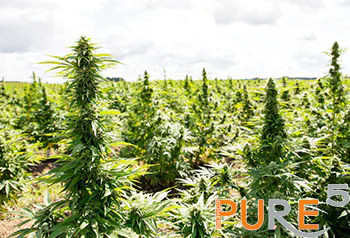
• The PX40’s drawbacks include the use of hydrocarbon solvents that must be eliminated later when processing cannabis, the fact that it is complicated and expensive, not suitable for usage on a small scale, and the need for cautious handling of the hydrocarbons.
Ice Water Extraction
As a commercial alternative to ice water extraction Eberbach Model E5703 machine was created. Food-safe components and stainless steel were used to construct the device.
The machine is perfect for extraction on a small scale.
This ice water extraction machine has a number of benefits, such as easy operation, low operating and maintenance costs, no use of hazardous chemicals, and suitability for small-scale use as opposed to commercial manufacturing.
On the other hand, the machine has a fair share of drawbacks, including slow extraction because it uses cold water, the fact that it is still in development, the lack of add-ons needed to scale up production, and the absence of publicly accessible data demonstrating its efficacy.
20L MAX LPE R134a aerosol extraction by Pure 5 Extraction
PURE5™ created its liquefied gas extraction technology for food, pharmaceutical, and cosmetic industries in 2004; however, it has now expanded into the medicinal cannabis industry.
Using the solvent tetrafluoroethane (TFE) R134a is one way to extract cannabis.
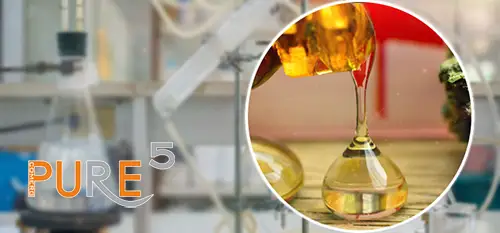
In a closed loop system, the raw cannabis products are extracted at low pressure and room temperature in order to remove the botanical oils and resins. The full spectrum oil is left behind as the gas is pushed through the plant material and retrieved under a light pressure. R134a is nontoxic, FDA-approved, and classified as GRAS, making it safe for human health (Generally Recognised As Safe). By EC Directive 2009/32, the European Union authorized the use of the gas as a solvent.
The solvent R134a removes the oil-soluble fractions thoroughly from the plant tissue due to its tiny, non-polar molecular size and inert nature. R134a extraction is carried out at room temperature under neutral circumstances for plant full spectrum oil.
Without component deterioration, the entire terpene profile is gathered, and it is simple to separate it from the solvent. Because of this, fresh plants are also frequently used in the extraction process. R134a does not remove solids, therefore winterization is typically not necessary. Additionally, it does not transfer any water-soluble substances present in the extract, such as chlorophyll, mold, or some pesticides. This makes the R134a method of extracting plant oils exceedingly pure. Pure Botanical Extracts (PBX™) is a procedure that was developed by PURE5™, which also holds the R134a extraction technology’s global intellectual property (IP) and know-how.
R134a aerosol is odorless, inert, non-toxic, non-flammable, non-corrosive, and it does not react with moisture to generate an acid. This broadens the range of potential applications to numerous pH-sensitive medicinal items.
It is crucial to understand that extraction at room temperature prevents thermal deterioration and the loss of volatile chemicals during isolation. R134a’s low boiling point does away with the necessity for laborious and slow solvent recovery.
R134a has a very high level of uniformity in the output oil and is very simple to use by non-scientists. R134a has very low labor and maintenance costs.
The best and biggest industrial R134a LPE machine is the 2000 liter. It is fully automatic with a programmable Logic Controller & touch screen. It costs less because of the extraction method and produces higher yields. It can process up to 200-300 pounds of material at once with a separator of 150 liters. It has maximum operating pressure at 12 bar and is really the most easy to use extraction system available at the market. It is ideal for commercial productions of very large size. There are alternative LPE extraction systems for small productions (20, 50, 100 liters), midsized productions (200 liters), large productions (500 liters) or larger commercial productions with 1000 liters volume.

